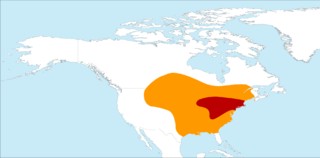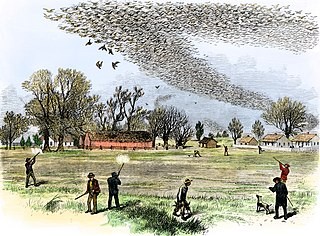Passenger Pigeon Roost
Introduction
Text-to-speech Audio
Images
Painting of Male and Female Passenger Pigeons
.jpg)
Passenger pigeon historical range for nesting (orange) and breeding (red)

Illustration of a Passenger Pigeon Shoot during Migration

Backstory and Context
Text-to-speech Audio
In her township by township series, Jean Gernand relates the following:
“Old settlers recalled stories of a huge wild pigeon roost on the present 400 East just south of SR 114. The weight of the birds was so heavy it would cause the side limbs of the trees to break. It was said that by the 1920s these birds were extinct, so it could be assumed that they were passenger pigeons.”
Passenger pigeons went extinct because they were overhunted as adults, their nests were disturbed, and their young were also collected. (Pigeons were advertised as cheap and tasty food.) Their extinction made national news and had such a public reaction that the beginnings of the modern wildlife conservation movement are attributed to it by at least some sources.
Sources
- Huntington County, Indiana History: Township by Township. 2004-2005. Jean Gernand.
- http://passengerpigeon.org/states/Indiana.html Accessed 27 May 2021.
- “Passenger Pigeon.” Wikipedia. https://en.wikipedia.org/wiki/Passenger_pigeon. Accessed 27 May 2021.
- “Why the Passenger Pigeon Went Extinct.” 2014. Barry Yeoman. https://www.audubon.org/magazine/may-june-2014/why-passenger-pigeon-went-extinct Accessed 27 May 2021.
Wikipedia
Wikipedia
Wikipedia
